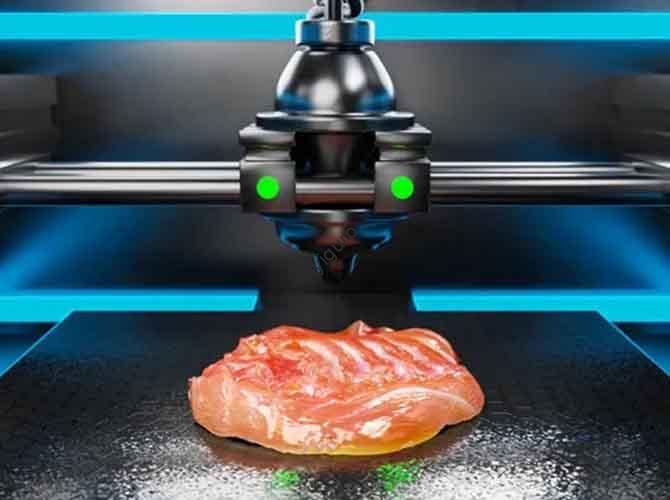3D Печать has revolutionized prototyping and small-batch production, but high costs often hold back enthusiasts and small businesses. Хорошие новости? You don’t need to compromise on quality to save money. This article breaks down actionable, low-cost 3D printing methods that cover design, материалы, эффективность, and equipment care—helping you reduce expenses without sacrificing results.
1. Optimize Designs: The First Step to Lower Costs
A well-designed 3D model can drastically cut printing time and material use. Here are three key design strategies, with a comparison of their impact:
| Design Strategy | How It Reduces Costs | Estimated Savings (За печать) |
| Simplified Geometry | Cuts unnecessary details (НАПРИМЕР., tiny textures) that increase print time and material use. | 15–30% less material/time |
| Hollowed-Out Structures | Replaces solid cores with hollow spaces (for non-load-bearing parts), slashing material consumption. | 25–40% less material |
| Early Manufacturability Check | Avoids reprints due to design flaws (НАПРИМЕР., unsupported overhangs) that require post-print modifications. | 30–50% (avoids wasted materials/ time) |
Key Question: When should you skip hollowing a model?
If the part needs to bear weight (НАПРИМЕР., ручка инструмента) or requires structural strength, a solid or partially filled design is better. For decorative items (НАПРИМЕР., фигурки) or non-functional prototypes, hollowing is ideal.
2. Choose Affordable Materials Wisely
Material costs make up a large portion of 3D printing expenses. Use these tactics to save without losing performance:
2.1 Pick Cost-Effective Materials
Not every project needs high-end filaments. For most basic uses, Плата (Полилактановая кислота) или АБС (Акрилонитрил бутадиен стирол) are the best low-cost options. Вот как они сравнивают:
- Плата: Дешевый (\(20- )30 за кг), легко печатать (no heated bed needed for some printers), и биоразлагаемый. Perfect for prototypes, игрушки, and decorative parts.
- АБС: Немного дороже (\(25- )35 за кг) but more durable and heat-resistant. Great for functional parts like phone cases or small tools.
Avoid specialty materials (НАПРИМЕР., carbon-fiber reinforced filaments, which cost $50+ за кг) unless your project specifically requires their properties.
2.2 Buy in Bulk
Purchasing filaments in bulk (НАПРИМЕР., 5kg or 10kg spools instead of 1kg) reduces the cost per kilogram. Например:
- 1kg PLA spool: ~$25
- 5kg PLA spool: ~ (100 (только \)20 за кг)
Это спасает 20% on material costs for regular users. Just ensure you store bulk filaments properly (in a dry box) to prevent moisture damage—moisture can cause printing defects and waste material.
3. Boost Printing Efficiency: Save Time and Reduce Waste
Efficient printing means less time the printer runs (более низкое использование энергии) and less material wasted. Следуйте этим шагам:
3.1 Adjust Printing Settings
Tweak these key parameters to balance speed, качество, и стоимость. Use this checklist for optimization:
- Высота слоя: For non-precision parts, increase layer height (НАПРИМЕР., from 0.15mm to 0.2mm) Чтобы ускорить печать. This reduces time by ~10–20% without visible quality loss.
- Плотность заполнения: Lower fill density (от 100% to 20–50%) for non-structural parts. А 50% fill uses half the material of a solid print.
- Скорость печати: Increase speed (within your printer’s limits—e.g., от 50 мм/с до 70 мм/с) для большого, Простые части. Test first to avoid layer separation.
3.2 Use Slicing Software to Minimize Waste
Нарезное программное обеспечение (НАПРИМЕР., Уход, Прусаслис) converts 3D models into printer-ready code. Here’s how to use it for cost savings:
- Preview Mode: Check for overhangs or gaps that could cause failed prints. Add supports only where needed (supports use extra material).
- Material Estimator: See how much filament a print will use before starting. Adjust the model size if the material cost is too high.
4. Maintain Your Printer: Avoid Costly Repairs
A well-maintained printer has fewer breakdowns, reducing repair costs and wasted materials. Follow this simple maintenance schedule:
| Частота | Задача | Цель |
| After Every 5 Prints | Clean the print bed (с изопропиловым спиртом) | Ensures parts stick properly (avoids failed prints). |
| Еженедельно | Lubricate moving parts (НАПРИМЕР., стержни, передачи) | Reduces friction and prevents wear. |
| Ежемесячно | Check filament feeder for clogs | Stops filament jams (which waste material and time). |
Для чаевого: Always use materials compatible with your printer. Например, a PLA-only printer can’t handle high-temperature filaments like PETG—using the wrong material can damage the nozzle or extruder, стоимость \(50- )100 в ремонте.
Перспектива Yigu Technology
В Yigu Technology, we believe low-cost 3D printing shouldn’t mean cutting corners on reliability. Our printers are designed to work seamlessly with affordable materials like PLA/ABS, and we include built-in slicing tools to optimize material use. We often advise users to start with design tweaks—they’re the most cost-effective way to save, as they don’t require extra investments. By combining smart design, affordable materials, and regular maintenance, anyone can make 3D printing accessible without overspending.
Часто задаваемые вопросы
- Q.: Can I reuse failed 3D prints to save material?
А: Да! You can shred failed prints into plastic pellets and melt them into new filament (using a filament extruder). Однако, this requires extra equipment (\(100- )300) and works best for PLA (ABS is harder to recycle at home).
- Q.: Is it cheaper to buy a cheap 3D printer or a more expensive one for low-cost printing?
А: A mid-range printer (\(200- )400) лучше. Cheap printers ($100 или меньше) often have poor build quality, leading to more failed prints and higher long-term costs. Mid-range printers are more reliable and work with affordable materials.
- Q.: How much electricity does a 3D printer use, and can I reduce that cost?
А: Most consumer 3D printers use 50–150 watts (like a small lamp). To save electricity, print multiple parts at once (instead of one at a time) and turn off the printer when not in use. Например, printing two small parts together uses the same energy as one, cutting per-part energy costs by 50%.
